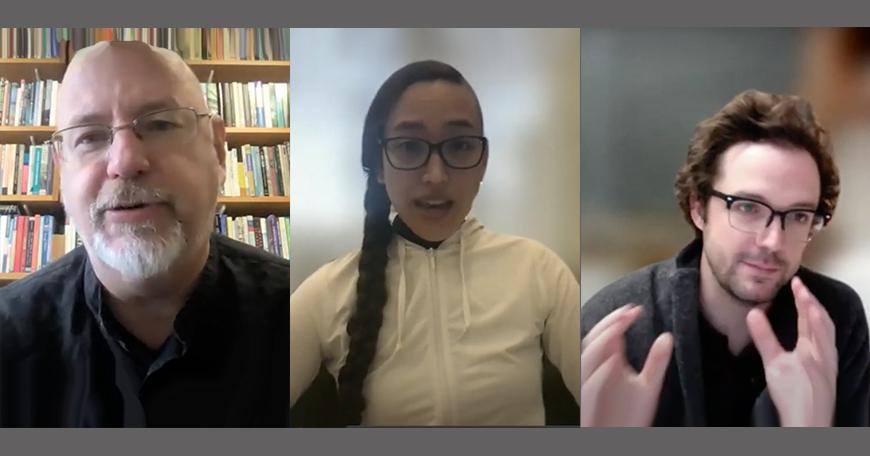Reflections on "Slack in Education"

Zoom and Slack: the dynamic duo of the pandemic, the pair of tools that are absolutely indispensable in these online years. But while Zoom captures the limelight of everything from handling several hundred participant lectures to lively small-group discussions with their well-known “breakout rooms,” Slack has been equally useful as the prime form of asynchronous communication, keeping relevant participants up-to-date without unnecessarily disturbing others.
In this December 1 xTalk, Assistant Director of Residential Eduction Aaron Kessler moderated an open discussion of Slack in education. Speakers came from an impressively diverse range of backgrounds to provide a varied perspective on stories, advice, and ideas on best practices for using Slack in and around the classroom.
First up was Professor Stefan Helmreich, who teaches in MIT’s anthropology department. He described his usage of Slack directly in the courses that he teaches, as a way to promote thorough preparation for each class session. By asking each student to comment on the readings and materials beforehand, Professor Helmreich has observed many improvements to the quality of learning. First, students simply engage deeper with the reading. Second, students who may be less willing to speak up in class might be incentivized to discuss their comments, especially as they interact with each other. Lastly, it allows for low-stress participation: whereas contributing thoughts during a live discussion might be difficult, doing so asynchronously can feel much easier.
Next was Dr. Monika Avello, who coordinates introductory level classes in MIT’s biology department. She provided an interesting contrast between Slack and email. In coordinating up to two dozen teaching assistants, Dr. Avello has found several advantages of Slack. However, they all boil down to a common thread: Slack is friendlier and requiring far less “activation energy” to use. Whereas email feels relatively formal, often with a greeting, signature, and paragraphs of text, Slack allows for and encourages quick “pings”, complete with colorful animated reactions that can only foster closer relationships and quick communication. As such, she has found much more painless communication as she organizes and manages teaching staff.
Then, Professor Tristan Collins, who teaches geometry and analysis in the mathematics department, offered a similar but unique perspective as he contrasted Slack with Piazza, another common asynchronous platform for students to get help. He shared a similar sentiment as Dr. Avello, in that Piazza was often best used for well-posed, longer form question, whereas Slack often facilitated a quick back-and-forth environment. Both were very beneficial to students who used them, however, and Prof. Collins certainly thought the minor headache of adding students to the Slack channel was well worth it.
Finally, Lauren Totino, a learning engineer at Open Learning’s own Residential Education, provided further potential use-cases for Slack. From project group work to recitations to informal conversation, each of these use-cases had several Slack features that were useful and applicable. However, she also stressed, like Dr. Avello, the important of setting the norm clearly and early. Since there can often be multiple modes of communication, like email, Slack, Canvas, and Piazza, it is important to unambiguously establish which forms will be used in order to avoid confusion.
All in all, these panelists provided a comprehensive view of the reality of using Slack in education. Filling a common niche, it is unsurprising that Slack has been adopted by many courses, departments, and labs. However, navigating yet another communication platform comes with difficulty and skill, and the illuminating insight of the panelists was a great place to start!

Kevin Shao ’23, is a third year student at MIT.

